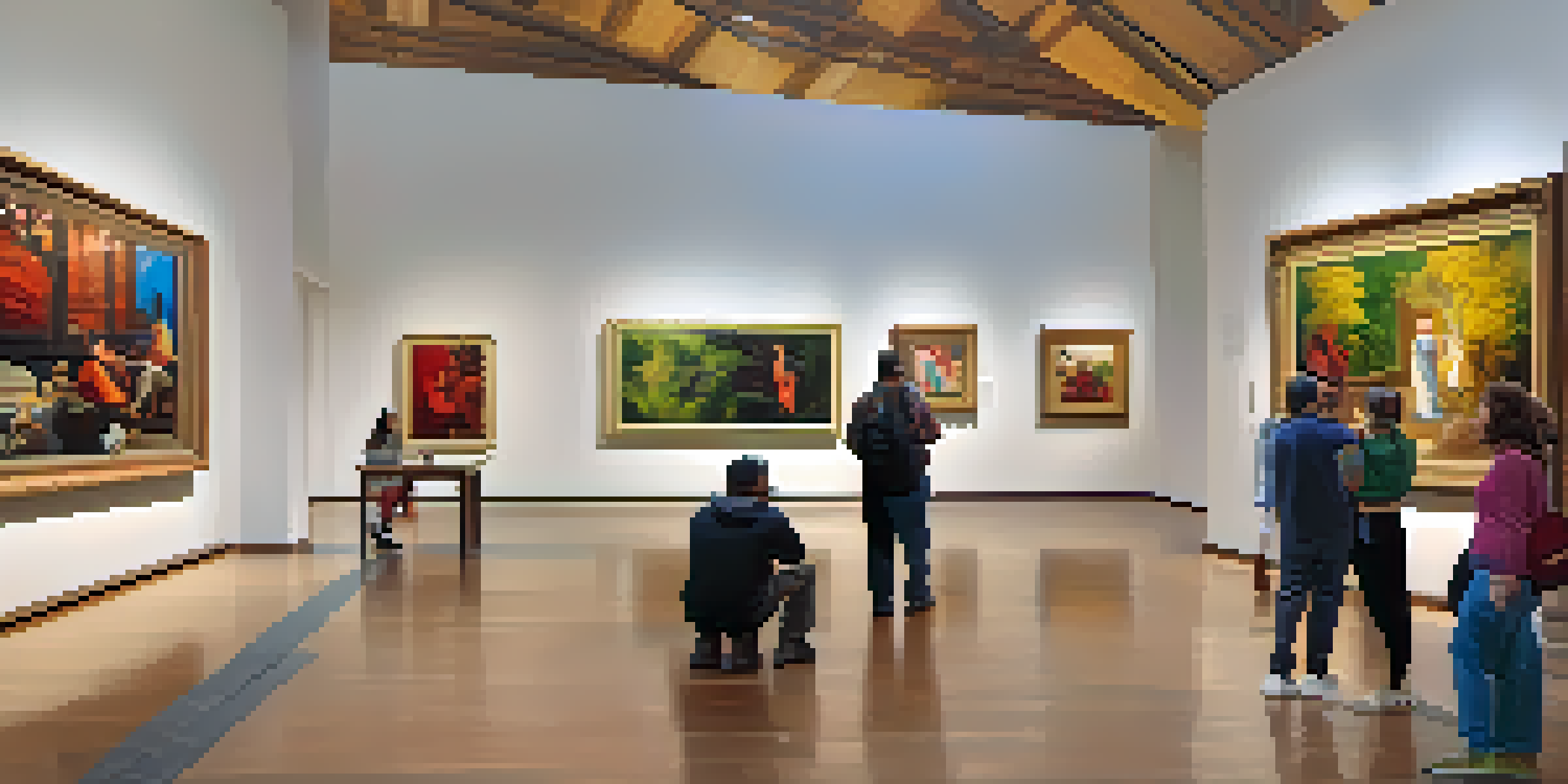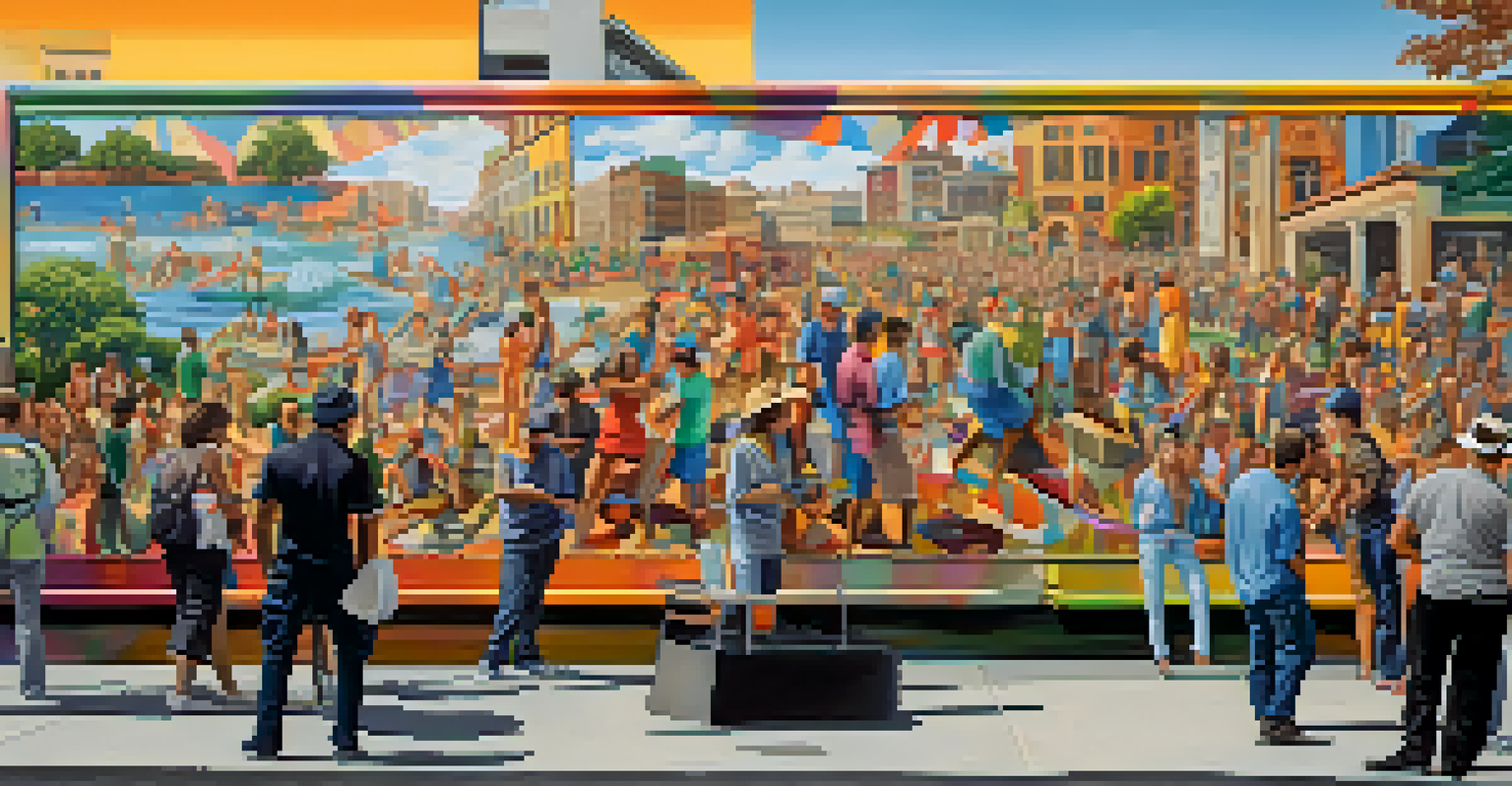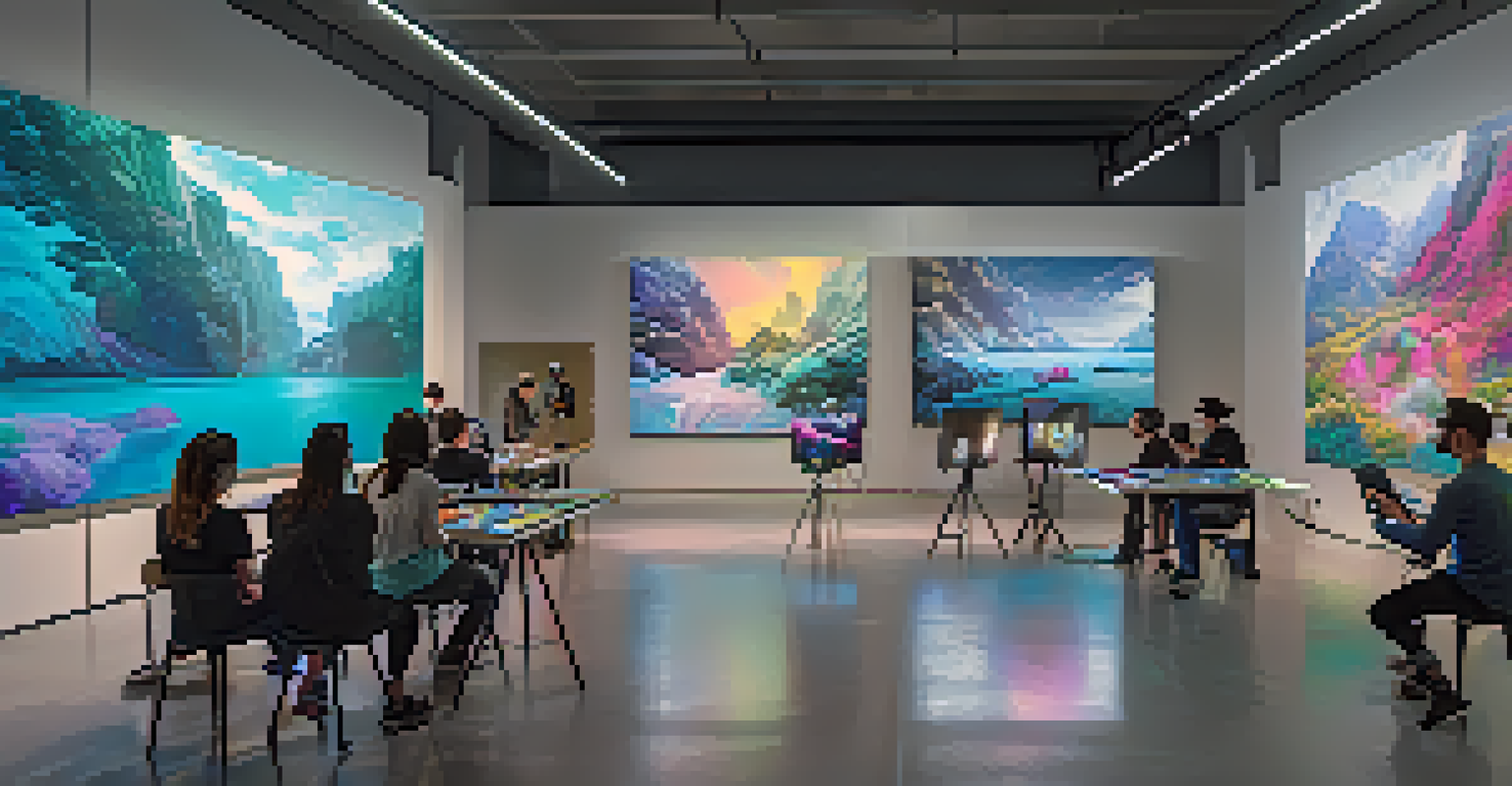Museums as Catalysts for Innovation in the Painting Scene

Museums: The Heart of Artistic Innovation
Museums have long been sanctuaries for art, but they also serve as vibrant hubs for innovation. They create environments where traditional and contemporary artists can interact, sparking fresh ideas and new approaches to painting. Think of a museum as a melting pot where various artistic styles blend, fostering creativity and pushing boundaries.
Art is not what you see, but what you make others see.
In these spaces, artists are not just passive observers; they're active participants in a dialogue about art. This interaction often leads to the creation of groundbreaking works that challenge perceptions and redefine what painting can be. Just as a conversation can inspire new thoughts, the exchanges that occur in museums can ignite innovative artistic directions.
Moreover, museums frequently host workshops, artist residencies, and collaborative projects, providing artists with the resources and support they need to experiment. This nurturing environment is crucial for fostering the next generation of painters who will continue to evolve the art form.
Exhibitions That Challenge Conventional Thinking
Exhibitions are essential for showcasing innovative ideas in the painting scene. Museums curate exhibitions that challenge viewers to think critically about art and its role in society. For instance, an exhibition that explores the intersection of technology and painting can invite artists to experiment with digital mediums, ultimately expanding their creative toolkit.

These exhibitions often include interactive elements, encouraging audience participation. When visitors engage with art in a hands-on manner, it can inspire both the artists and the viewers to think outside the box. This two-way interaction can spark a wave of creativity that resonates beyond the museum walls.
Museums Foster Artistic Innovation
Museums create vibrant environments that encourage collaboration and experimentation among artists, leading to groundbreaking works.
Additionally, themed exhibitions can highlight underrepresented voices in the art world, fostering diversity and inclusivity. By showcasing a variety of perspectives, museums not only enrich the painting scene but also encourage artists to innovate within their own practices.
Artist Collaborations: A Driving Force for Change
Collaboration is a powerful catalyst for innovation, and museums provide the perfect backdrop for artists to join forces. By bringing together painters from different backgrounds and styles, museums foster an environment where creative synergy can flourish. This collaboration often leads to new techniques, styles, and concepts that might not have emerged in isolation.
Creativity takes courage.
Take, for example, collaborative projects where artists work together to create large-scale murals. These projects not only beautify public spaces but also allow artists to experiment with new ideas and mediums. The blending of styles and perspectives can result in breathtaking works that push the boundaries of traditional painting.
These partnerships also enhance community engagement, inviting local artists and the public to participate. Such inclusivity not only enriches the artistic experience but also helps to inspire a new generation of painters who see the value in collaboration.
Educational Programs: Nurturing Future Innovators
Educational programs in museums play a crucial role in cultivating innovation in the painting scene. Through workshops, lectures, and hands-on activities, museums provide aspiring artists with the tools and knowledge they need to express themselves creatively. These programs often focus on contemporary issues, encouraging students to explore how their work can address societal challenges.
For instance, a museum might host a workshop on eco-friendly painting techniques, prompting artists to consider sustainability in their work. By connecting art with pressing global issues, these programs inspire artists to innovate and think critically about their impact on the world.
Exhibitions Inspire Critical Thinking
Curated exhibitions challenge viewers and artists alike, promoting diverse perspectives and innovative practices in painting.
Additionally, mentorship opportunities offered by established artists can further enhance the learning experience. This guidance allows emerging artists to develop their unique voice while also instilling confidence in their ability to innovate within the painting landscape.
Art Technology: Expanding the Canvas
The integration of technology into the painting scene is a remarkable development that museums are embracing wholeheartedly. By incorporating digital tools and software, artists can explore new dimensions of creativity that were once unimaginable. For example, virtual reality (VR) allows painters to create immersive environments that challenge traditional notions of space and perspective.
Museums often host exhibitions that showcase these technological advancements, inspiring artists to experiment with techniques like projection mapping or augmented reality. This blending of art and technology not only enhances the viewer's experience but also pushes painters to rethink their creative processes.
Furthermore, workshops on digital painting and graphic design can equip artists with essential skills for the modern art world. By embracing technology, museums are not just preserving the past; they're actively shaping the future of painting.
Cultural Exchange: Learning from Global Perspectives
Museums serve as gateways for cultural exchange, allowing artists to learn from global perspectives. By hosting international exhibitions and artist exchanges, they create opportunities for artists to immerse themselves in different cultures and artistic traditions. This exposure can lead to innovative approaches in painting that blend diverse influences.
For instance, an exhibition featuring artists from various countries can showcase unique techniques and styles that challenge conventional norms. This not only enriches the local art scene but also encourages artists to experiment with new ideas drawn from their international counterparts.
Technology Expands Artistic Boundaries
The integration of technology in art allows painters to explore new creative dimensions, reshaping traditional notions of painting.
Moreover, cultural exchange fosters a sense of community and collaboration among artists. By sharing their experiences and insights, artists can inspire one another to push the boundaries of their work, ultimately leading to a more vibrant and innovative painting scene.
The Future of Painting: Museums Leading the Way
As we look to the future of painting, museums will continue to play a pivotal role in shaping artistic innovation. By fostering collaboration, embracing technology, and promoting cultural exchange, they create an ecosystem where creativity can thrive. This commitment to innovation ensures that the painting scene remains dynamic and relevant in an ever-changing world.
Museums are not just custodians of the past; they are active participants in the present and future of art. By supporting emerging artists and encouraging experimentation, they help to cultivate a new generation of painters who will redefine the boundaries of their craft.

Ultimately, the relationship between museums and the painting scene is one of mutual growth and inspiration. As artists continue to push the envelope, museums will remain steadfast allies in the quest for innovation, ensuring that the world of painting continues to evolve and inspire.